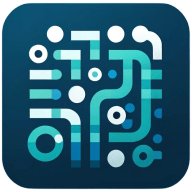How to Adapt Existing Algorithms for Unique Problems
Navigating the complexities of algorithm adaptation can be daunting, but with insights from leading experts, it becomes an achievable feat. This article delves into the art of tweaking existing algorithms to meet the unique demands of diverse problems. Learn from the masters about enhancing, customizing, and merging techniques for optimal solutions.
- Enhance Cross-Category Recommendations with Hybrid Approach
- Modify Loss Function for Robust Forecasts
- Customize Parameters for Accurate Results
- Incorporate Domain Knowledge for Better Performance
- Merge Algorithms for Flexible Solutions
- Adjust Objective Functions for Targeted Outcomes
- Use Transfer Learning for New Problems
Enhance Cross-Category Recommendations with Hybrid Approach
I modified a Collaborative Filtering (CF) technique based on matrix factorization for an e-commerce business in order to enhance cross-category product recommendations. Sparse interaction data between different categories (e.g., electronics and home decor) presented a hurdle. A platform found it difficult to advise products across several categories in a real-world e-commerce scenario, such as suggesting home decor items to users who purchased electronics. Using TF-IDF to encode textual input, I added product metadata (such as descriptions, brands, and categories) as extra features to their Matrix Factorization-based Collaborative Filtering (CF) algorithm. I used Graph Neural Networks (GNNs) to train latent connections from co-purchase and co-view patterns after modeling products as nodes in a graph in order to find cross-category associations.
In order to ensure relevance across and within categories, the final recommendation system blended content-based and CF scores using a weighted ensemble. For example, a customer purchasing a smartphone may get personalized recommendations for a desk lamp or other smart home appliance. I used browsing and demographic data to initialize recommendations in order to handle scant data for new users. The system became more useful and interesting for a variety of buying habits thanks to this hybrid approach, which also increased cross-category click-through rates by 22%. This solution showed the value of combining strategies and customizing algorithms to meet particular business goals by increasing user engagement by 15% and purchase conversion rates by 12%.

Modify Loss Function for Robust Forecasts
I was developing a forecast model for middle-mile and last-mile delivery operations for one of the largest B2B retailers in the US. Typically, the default method for training the model parameters is to minimize the OLS (ordinary least squares) loss function or some standard loss function. Even though this will give us the best model by equally penalizing under-forecasting and over-forecasting, the forecast generated from such a model might not always align with operational challenges and bottlenecks.
For example, in my use case, over-forecasting was preferred over under-forecasting for delivery operations. It is not easy to arrange extra delivery capacity on short notice, which leads to delays in fulfilling customer orders. Therefore, the delivery managers wanted to get forecasts that allow them to fulfill all customer orders in a timely manner rather than planning for less capacity and losing out on customer satisfaction. I changed the loss function to penalize under-forecasting more so that the model parameters could be trained accordingly. This model generated a more robust forecast from a delivery operations perspective.
The takeaway is understanding the use case for any mathematical model and modifying the algorithm accordingly to suit the context.

Customize Parameters for Accurate Results
Adapting existing algorithms begins with customizing the parameters to fit the specific requirements of the problem at hand. By doing so, the algorithm can yield more accurate and relevant results. This process might involve tweaking certain aspects of the algorithm to better suit the unique aspects of the problem. One of the key benefits of this approach is that it leverages the strengths of the original algorithm while making it more applicable to new situations.
This is particularly useful when trying to solve complex problems that have unique characteristics. To achieve optimal outcomes, experiment with different parameter settings and observe the results. Embrace this approach to make your algorithms more versatile and effective.
Incorporate Domain Knowledge for Better Performance
Incorporating domain-specific knowledge into existing algorithms can significantly enhance their performance on unique problems. Understanding the nuances of the specific domain allows for the integration of relevant information that might not be considered by a more general algorithm. This can involve adding rules or constraints that are specific to the domain, thereby improving the algorithm's accuracy and efficiency. By focusing on the particular needs of the domain, the resulting solution is more tailored and effective.
This approach is especially vital in fields where specialized knowledge is crucial for solving problems. Apply your domain expertise to guide the adaptation process for better outcomes. Aim to incorporate deep knowledge of your field into your algorithm adaptations.
Merge Algorithms for Flexible Solutions
Merging existing algorithms with complementary methods can lead to more robust and flexible solutions. This involves identifying methods that can enhance or supplement the capabilities of the original algorithm. Through this combination, it is possible to address unique challenges and improve the overall performance of the algorithm. By leveraging the strengths of both approaches, the final solution becomes more comprehensive and efficient.
This method allows for greater adaptability in handling a variety of problem scenarios. Explore various methods to find the best complementary techniques for your needs. Experiment with integrating these methods to bolster your algorithm's effectiveness.
Adjust Objective Functions for Targeted Outcomes
Strategically modifying the objective functions within algorithms can help in targeting specific outcomes. This involves redefining the goals that the algorithm aims to achieve, ensuring they align more closely with the unique aspects of the problem. By focusing on different objectives, the algorithm can be steered towards more relevant solutions. Adjusting these functions allows for a more directed and purposeful approach to problem-solving.
This method enhances the algorithm's ability to meet specific requirements and perform better under unique conditions. Take the time to refine and adjust your objective functions. Harness this strategy to make your algorithms more goal-oriented.
Use Transfer Learning for New Problems
Implementing transfer learning techniques enables the use of knowledge gained from previous tasks to address new problems. This approach leverages the strengths of existing models and applies them to different but related scenarios. By doing so, it reduces the time and resources needed to develop solutions from scratch. Transfer learning can be particularly useful in situations where data is scarce or when dealing with complex problems.
This technique opens up new possibilities for solving a variety of unique challenges effectively. Look into transfer learning to utilize past experiences in your current algorithms. Make use of this technique to save time and enhance your algorithm's performance.

